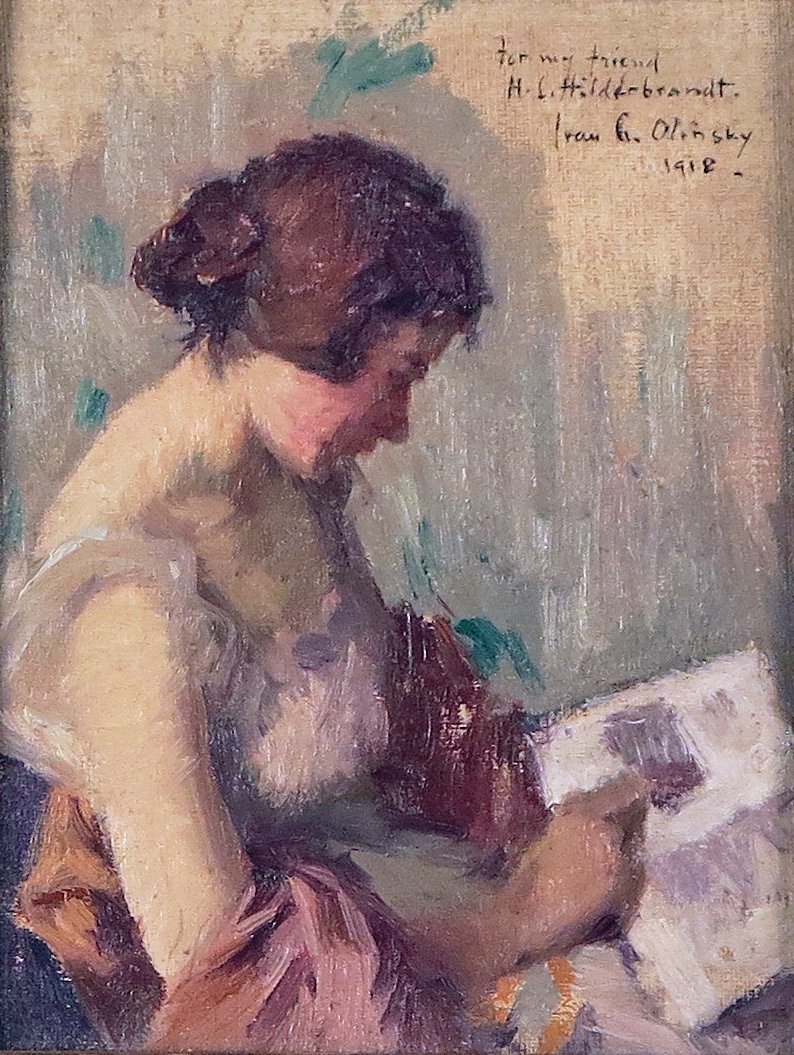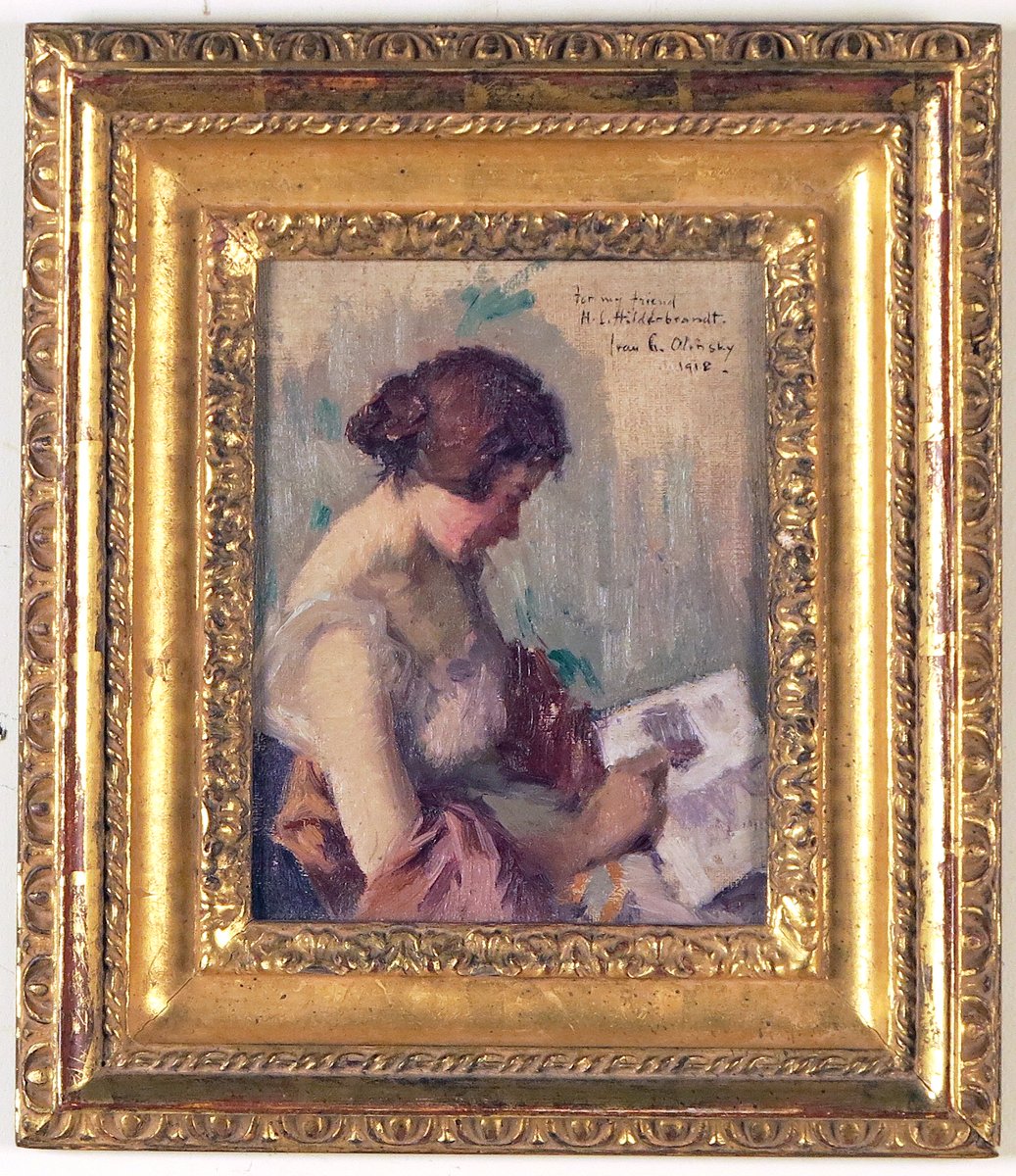Paintings
Ivan G. Olinsky
Russian/American, 1878-1962Woman Reading
Oil / Panel10 by 8in. W/frame 14 by 12in.
Signed upper left ‘for my friend H.L. Hilderbrandt Ivan G. Olinsky, 1918’
Inventory Number: Art O3
See Artist Bio below.
Ivan G. Olinsky
Russian/American, 1878-1962To capture the elusive qualities of human character and express it successfully demands of an artist great skill and insight. Such an artist was Ivan Olinsky. Demand for his portraits never waned throughout his life just as his perceptiveness never seemed to decrease.
Born in an agricultural district of the Ukraine, Olinsky displayed a precocious artistic ability at a very young age. At ten years old, he was invited to join the drawing class at the university in Elizabethgrad, near Odessa. Here, he worked with students twice his age. In 1890, his family emigrated to the United States to settle in New York City. At sixteen he won admission to the National Academy of Design to study under Francis Coates Jones, Edgar Melville Ward, Charles Yardley Turner and George W. Maynard. In 1900, a friend recommended Olinsky to John La Farge who was looking for a young man to “correct? his drawings and assist in the studio. Olinsky appreciated the opportunity to work with such an exceptional artist who was arguably the most versatile of his era. He renewed his contract with La Farge two or three times until 1908, when Olinsky said that “it got so that unless I found out what I could do by myself, I would give up art.?
So it was that Olinsky took his new wife on a tour of Italy and France to study the old masters in the Louvre and paint scenes along the canals of Venice. In 1910, Olinsky returned to New York in time to serve as pallbearer at La Farge’s funeral. After this sad event, Olinsky set up a studio in Washington Square and began to paint his wife and daughters. These pictures drew such attention that Olinsky now found himself in the portrait business.
The portraits he did of men are generally to be found hanging in boardrooms or other imposing spaces, their subjects formally portrayed. The commissioned portraits of women were more like the paintings he did for exhibition, meant to adorn the home. This does not mean that the women depicted were merely ornamental. On the contrary, more than most artists, Olinsky painted females with real and individual qualities even as they represented ideals of womanhood. Despite smooth features and flawless skin, they are not hothouse flowers. Commentators frequently noted the “sturdy fragility? of an Olinsky woman, “a hardy perennial despite her delicate air.? This particular work is not meant to be a portrait like his commissioned works, but rather a display of his skills in color harmony and portrayal of the human form and spirit. The model in this work is quite possibly one of his students.
Memberships:
National Academy of Design; National Society of Mural Painters; Salmagundi Club; Lotos Club; National Arts Club; American Federation of the Arts; Architectural League of New York; Artists Aid Society
Art Institute of Chicago; Butler Institute of American Art, Youngstown, Ohio; Dallas Art Association; Detroit Institute of the Arts; Metropolitan Museum of Art, New York City; Montclair Museum of Art, New Jersey; National Academy of Design, New York City; National Arts Club of New York; Norfolk Art Museum, Virginia; Omaha Society of Fine Arts; St. Thomas Lutheran Church, New York City



